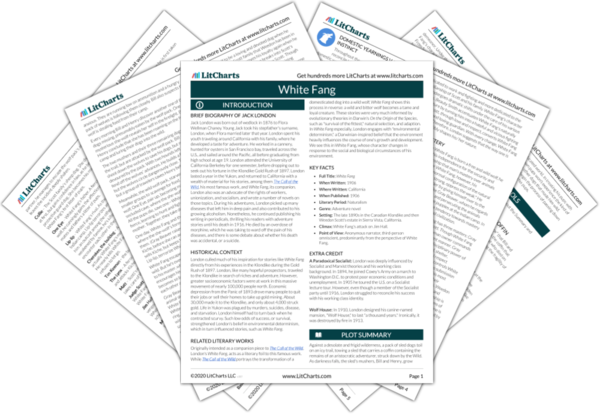Next
Summary
White Fang Study Guide |
Next
Summary
|
Welcome to the LitCharts study guide on Jack London's White Fang. Created by the original team behind SparkNotes, LitCharts are the world's best literature guides.

A Paradoxical Socialist: London was deeply influenced by Socialist and Marxist theories and his working class background. In 1894, he joined Coxey's Army on a march to Washington D.C. to protest poor economic conditions and unemployment. In 1905 he toured the U.S. on a Socialist lecture tour. However, even though a member of the Socialist party until 1916, London struggled to reconcile his success with his working class identity.
Wolf House: In 1910, London designed his canine-named mansion, "Wolf House," to last "a thousand years." Ironically, it was destroyed by fire in 1913.